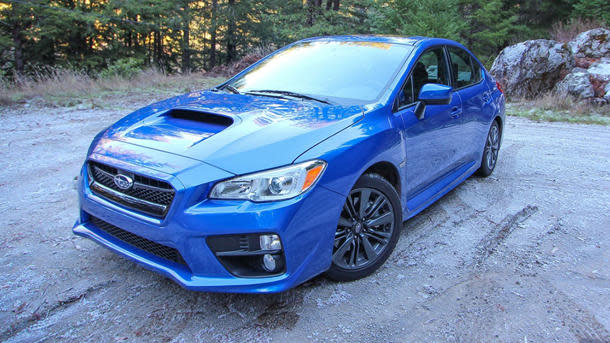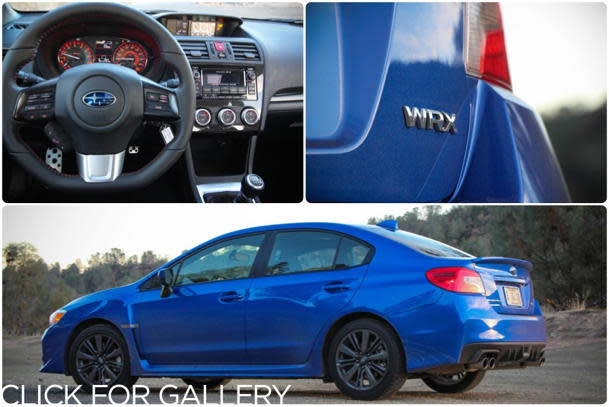 Motoramic
Motoramic2015 Subaru WRX, the sharper tool: Motoramic Drives
There are cool cars, and then there are cult cars. Cool cars — like, say, the Volkswagen GTI — are admired by the masses. Cult cars are loved — obsessed over, really — by a fanatical few. And as far as cult cars go, few can top the Subaru Impreza WRX.
Crafted from the econocar bones of the humble Impreza and pumped up with a raucous turbocharged engine, rally-bred all-wheel drive system and zoomy body modifications, Subaru’s scrappy little WRX has spent over two decades picking fights with many sports cars costing twice as much. And it often wins, especially when the weather gets nasty.
Early on, Subaru sold the WRX (and its even gnarlier STI variant) only overseas, where the popularity of rally racing gives the WRX a built-in market. But a groundswell of demand for the WRX eventually prompted Subaru to import the WRX to these shores in 2001. Now, nearly 80 percent of all WRXs are sold in the United States.
We bring this up primarily to explain why Subaru dropped the WRX hatchback for its all-new 2015 redesign. Previously, the WRX sales were about half sedan, half five-door hatchback. But according to Subaru, limited engineering resources forced it to choose one style, and since Americans generally prefer four doors to five, the hatch gets the ax. This will certainly disappoint many WRX fans whose contrarian spirits make hot-shoe hatchbacks particularly delightful propositions; to them, we say wait another year or so until the next-gen STI appears, which we suspect will return to hatchback form.
Or they can swallow hard and get on board with the new WRX sedan, which is so much fun to drive that they may not care what the cargo hold looks like.
Indeed, Subaru’s “limited resources” have turned out a WRX so thoroughly transformed that it seems closer to the outgoing STI screamer than the previous WRX. The new structure is 40 percent stiffer, thanks to liberal use of high-strength steel and aluminum, with additional bracing beyond the already stiff Impreza. Year-over-year weight gain has been kept to just 60 pounds.
The transformation continues with a new 2-liter, directly injected turbocharged boxer four-cylinder engine that pumps out 268 hp at 5,600 rpm and 258 lb-ft of torque from 2,000 through 5,200 rpm (up three ponies and 14 lb-ft from last year’s 2.5-liter engine).
Subaru estimates that 80 percent of WRX buyers will choose the new six-speed manual transmission, which features carbon synchronizers on first and second gears. A viscous center differential distributes torque 50/50 front/rear, unless grip is compromised at either axle, at which point more torque is sent to the axle with the best traction.
The other 20 percent of buyers are expected to opt for the new continuously variable transmission. While at first blush, a CVT in a WRX seems incongruous, if not horrifying, Subaru has done some interesting things to ensure that its “Sport Lineartronic” transmission does not behave with the gum-on-your-shoe character endemic to CVTs. First, it has three distinct modes: Intelligent, Sport, and Sport # (pronounced “sport sharp”), selectable via buttons on the steering wheel. In Intelligent mode, it behaves like a normal CVT until about 40 percent throttle application, at which point it “shifts” along six fixed ratios. Selecting Sport drops the threshold to 30 percent throttle and sharpens throttle response. The Sport # setting always operates in stepped mode, with eight fixed ratios, anticipatory downshifts and even sharper throttle calibration. In any setting, manual shifts may be summoned via standard steering wheel paddles or a separate manual gate at the shifter itself.

 Yahoo Autos
Yahoo Autos 

